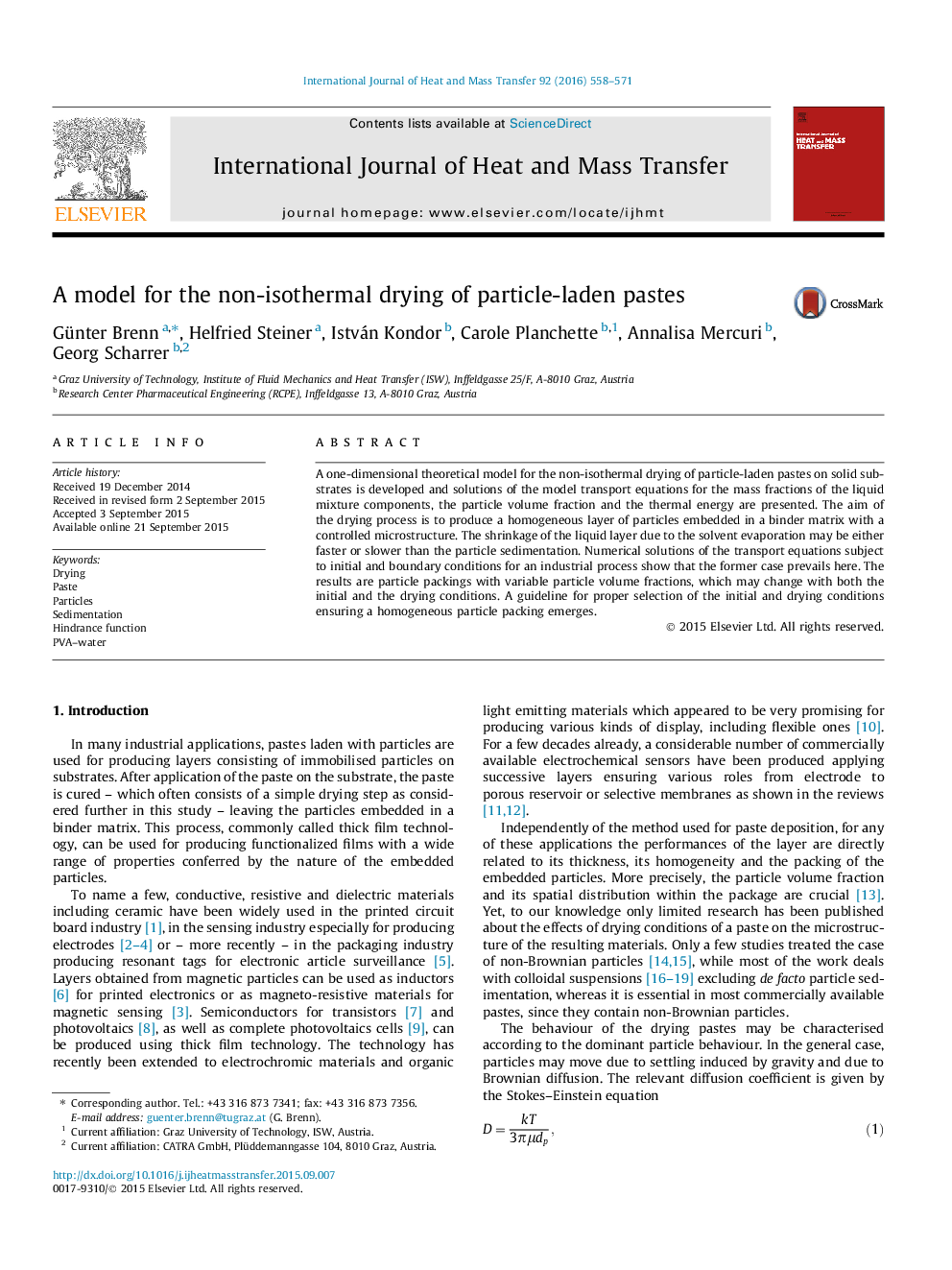| Article ID | Journal | Published Year | Pages | File Type |
|---|---|---|---|---|
| 656560 | International Journal of Heat and Mass Transfer | 2016 | 14 Pages |
•Simulation of non-isothermal particle-laden paste drying with a one-dimensional model.•Physico-chemical concentration-dependent paste behaviour is accounted for.•Hindrance of particle motion by other particles is accounted for.•Spatio-temporal evolutions of paste component and particle contents are obtained.•Guideline for maximum paste layer thickness ensuring uniform drying is presented.
A one-dimensional theoretical model for the non-isothermal drying of particle-laden pastes on solid substrates is developed and solutions of the model transport equations for the mass fractions of the liquid mixture components, the particle volume fraction and the thermal energy are presented. The aim of the drying process is to produce a homogeneous layer of particles embedded in a binder matrix with a controlled microstructure. The shrinkage of the liquid layer due to the solvent evaporation may be either faster or slower than the particle sedimentation. Numerical solutions of the transport equations subject to initial and boundary conditions for an industrial process show that the former case prevails here. The results are particle packings with variable particle volume fractions, which may change with both the initial and the drying conditions. A guideline for proper selection of the initial and drying conditions ensuring a homogeneous particle packing emerges.
